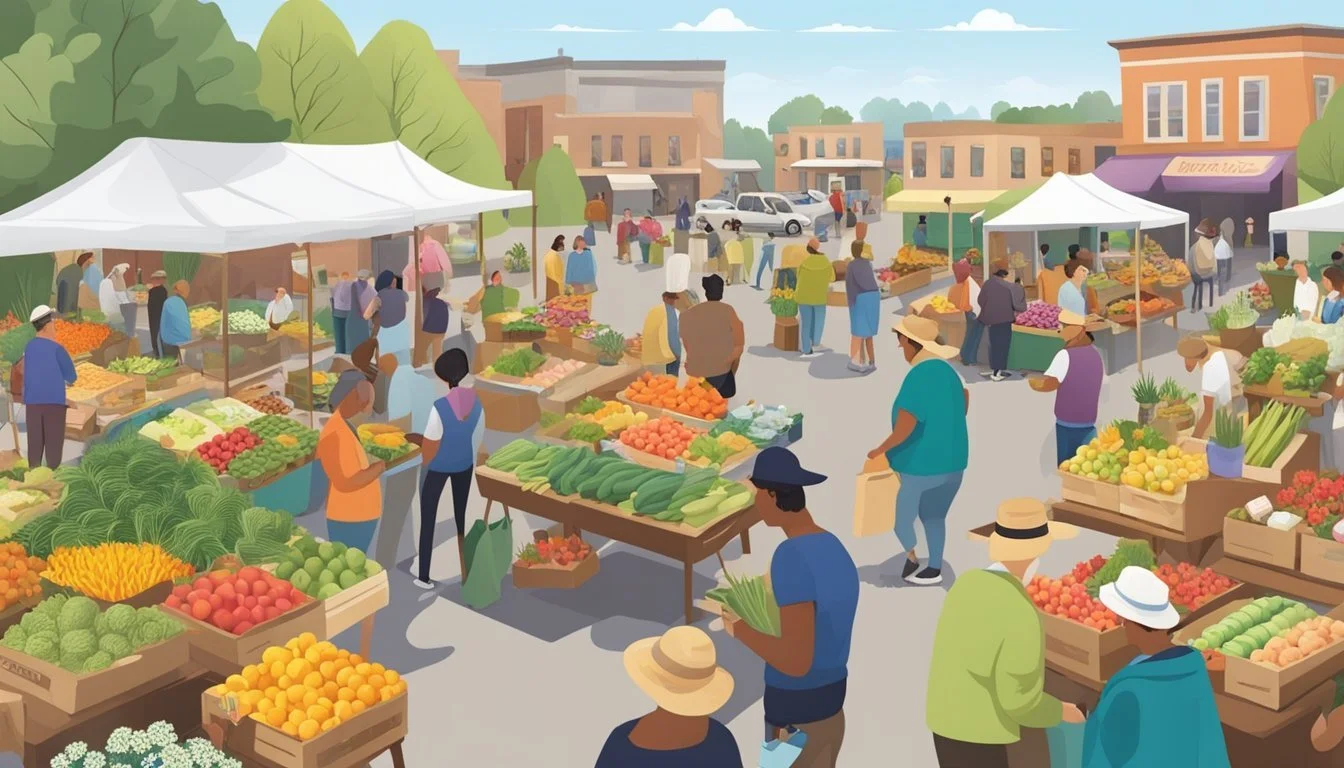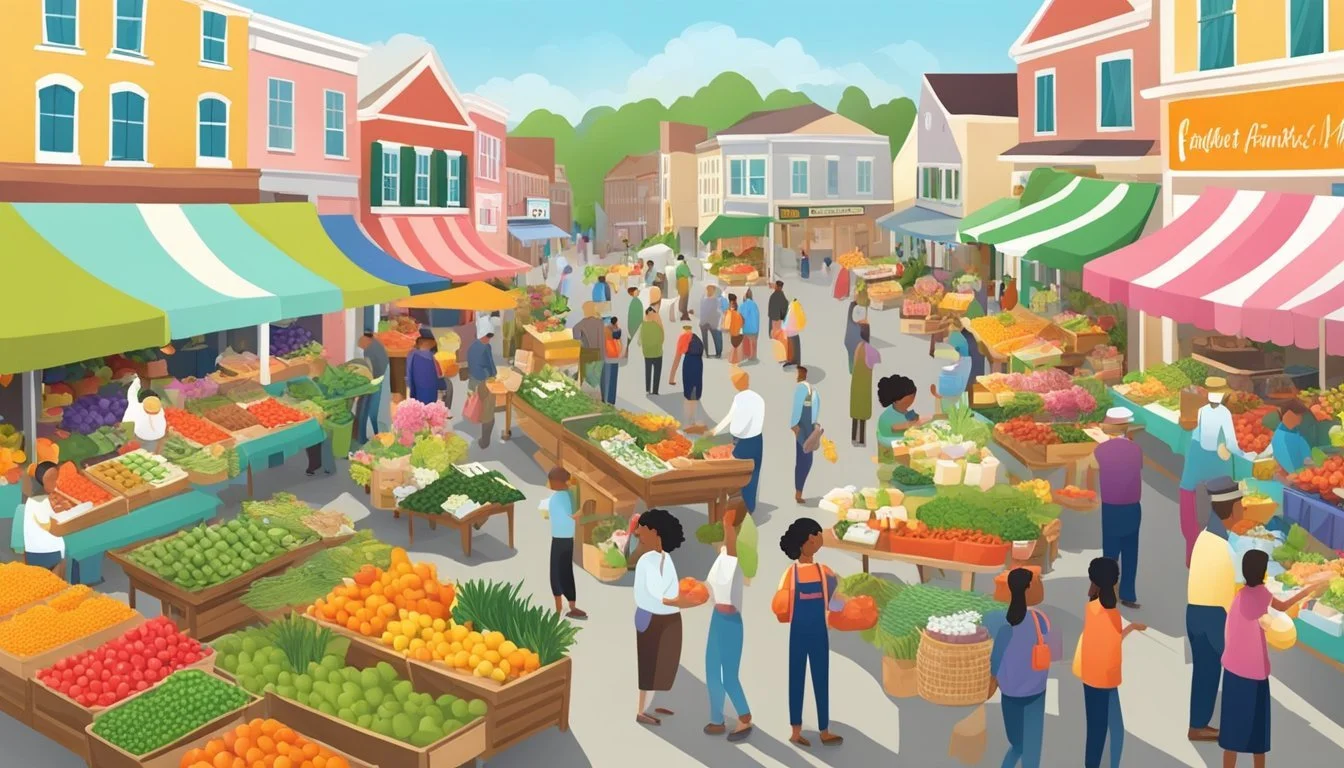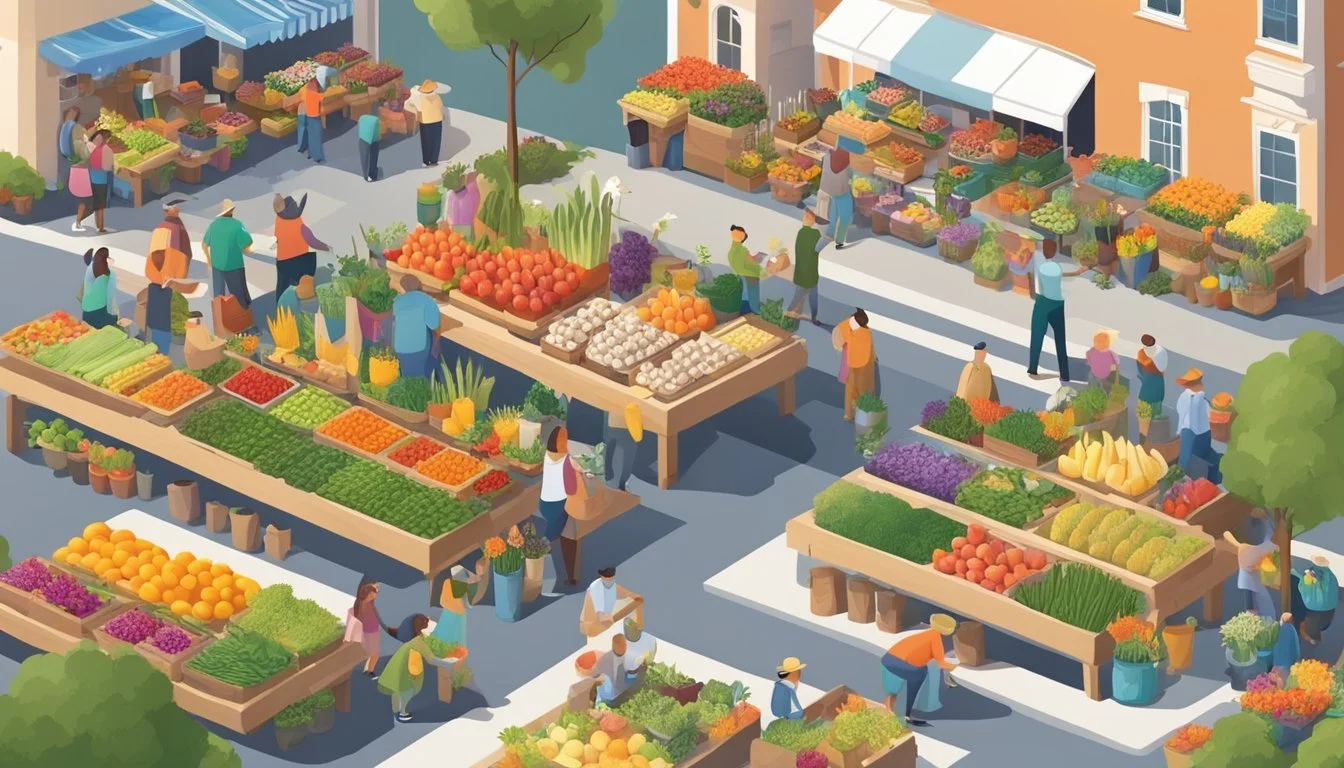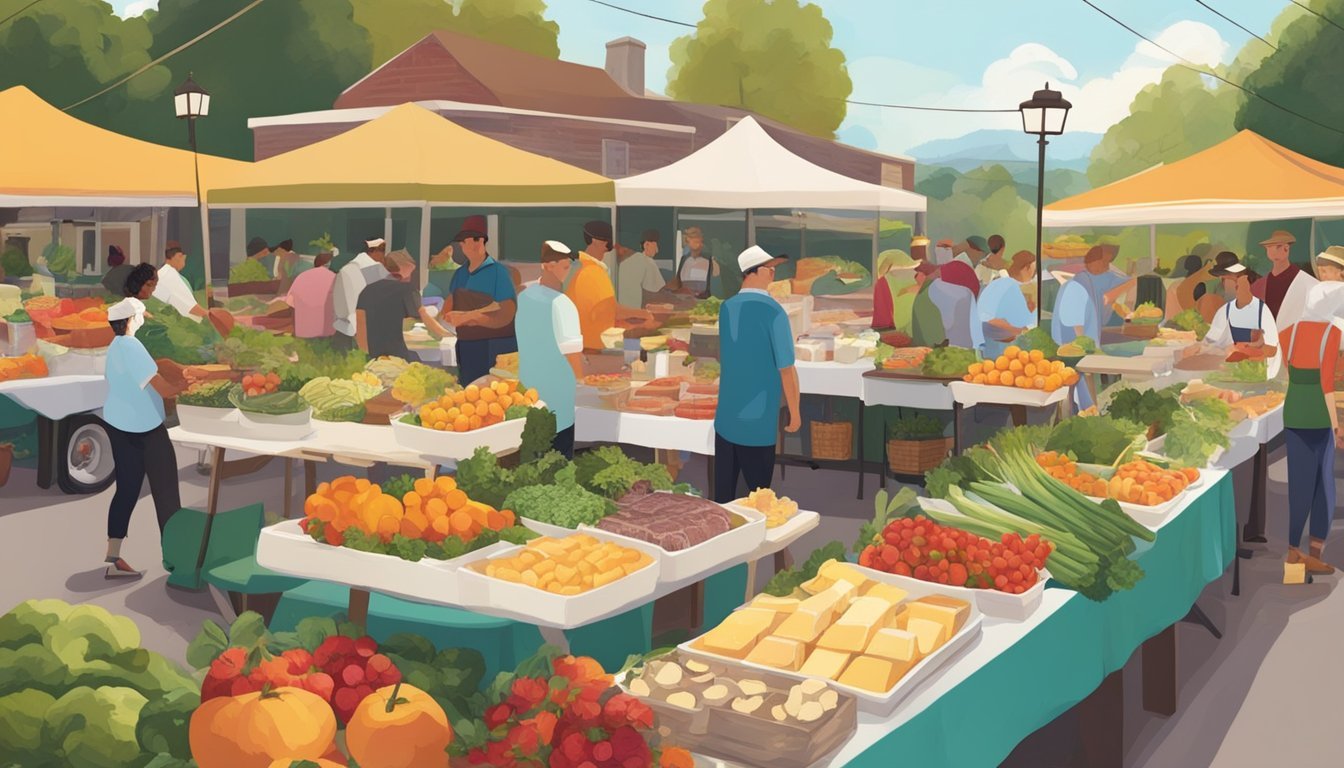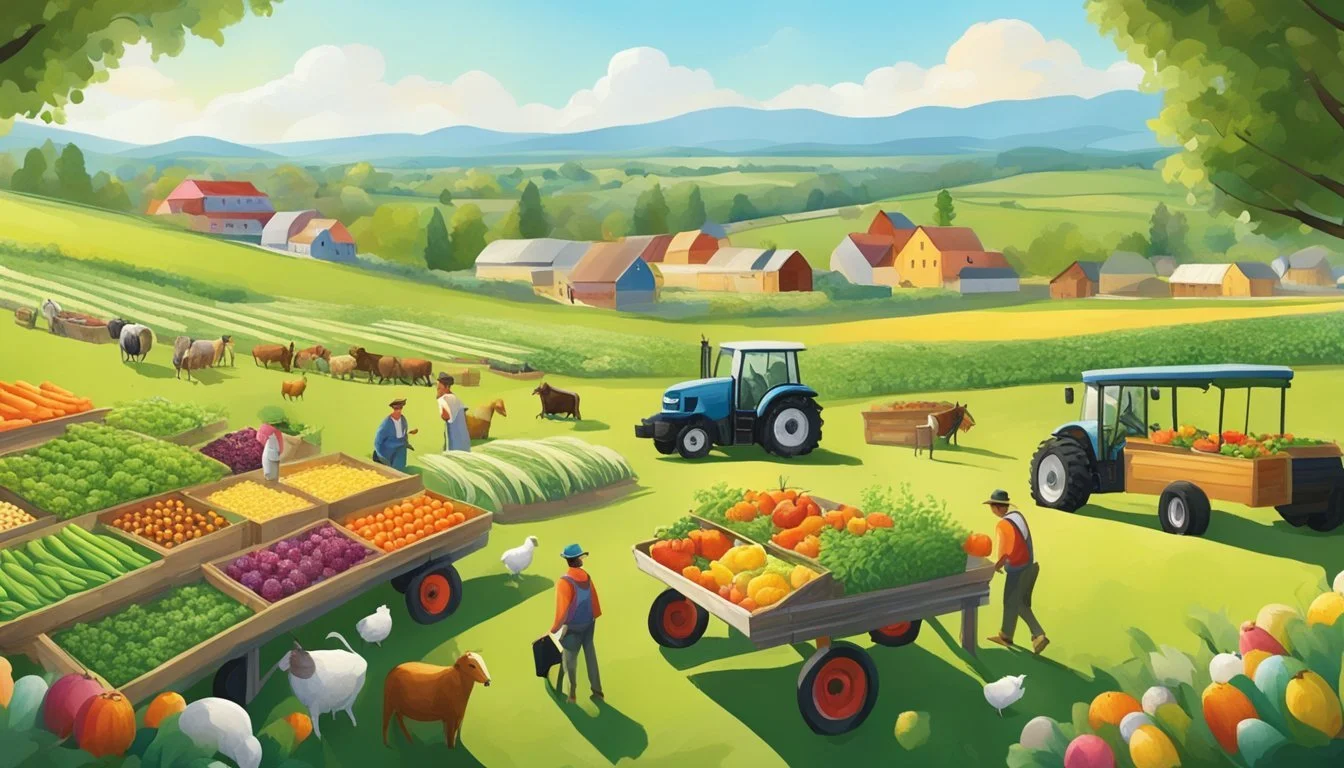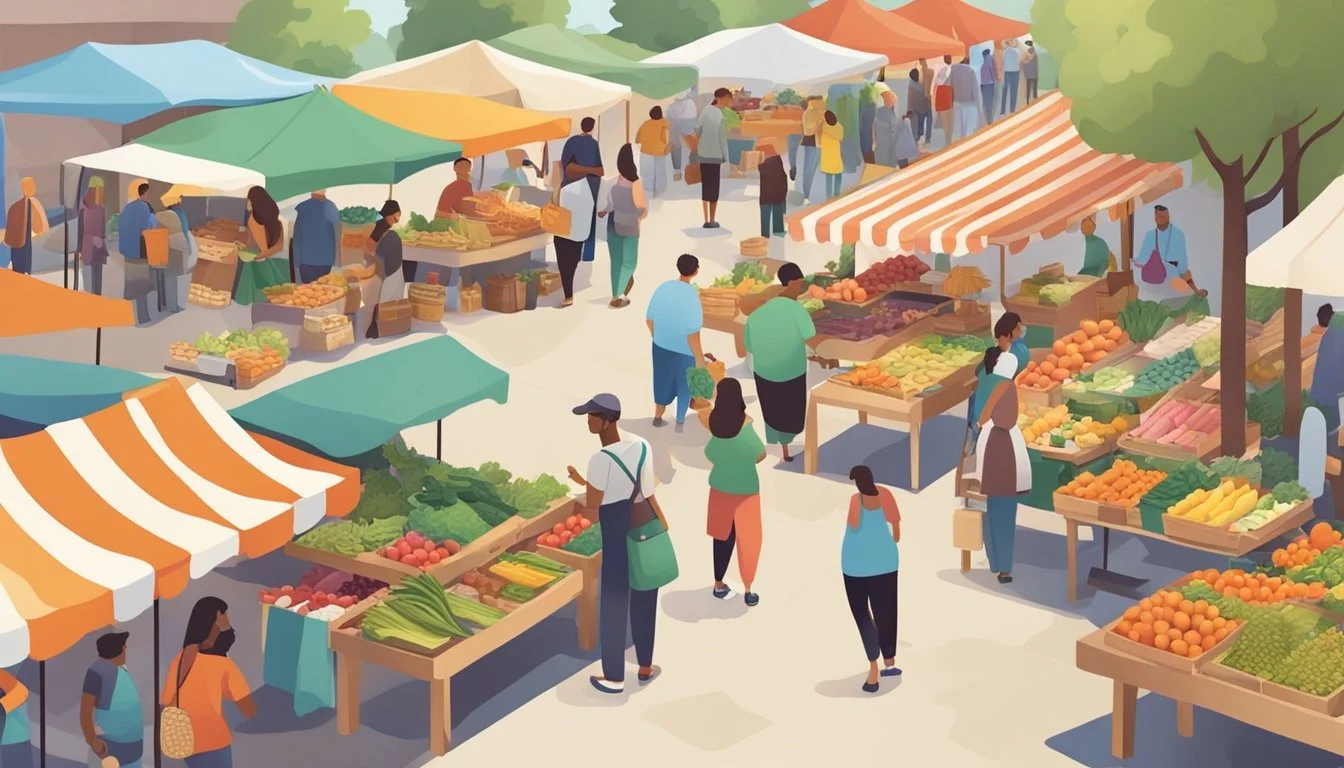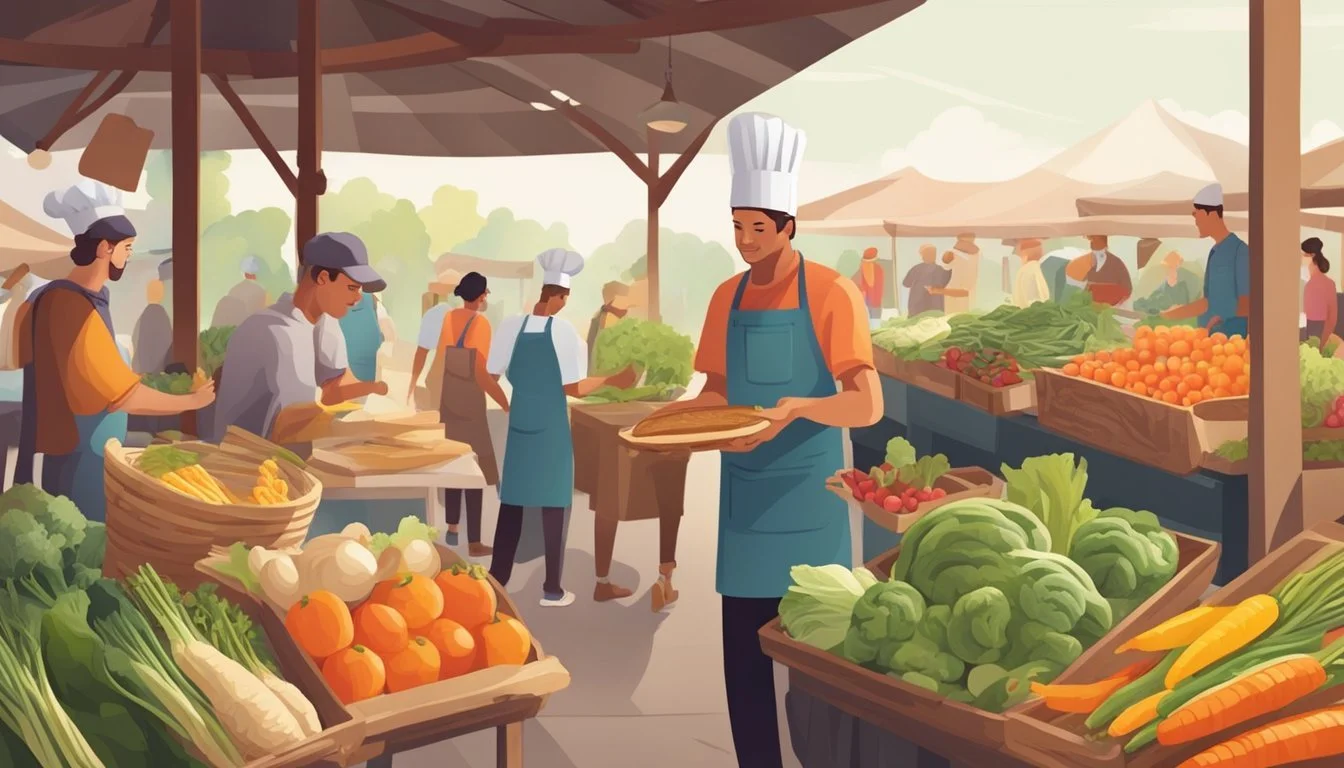Farm-to-Table Easter
Embracing Local Produce for a Festive Feast
The farm-to-table movement reshapes the culinary landscape by bringing locally sourced ingredients to the forefront of dining, a trend that has gained momentum over the years. As families prepare for Easter celebrations, a holiday known for its communal feasts and traditional dishes, they increasingly turn to nearby farms and local markets to procure ingredients. This approach not only ensures the freshness of food on the table but also supports the local economy and promotes sustainable practices that are kinder to the environment.
Incorporating farm-to-table principles into an Easter feast means selecting produce, meats, and dairy from local producers, fostering a deeper appreciation for the food's journey from soil to plate. It invites individuals to learn about regional farming methods, the seasonality of ingredients, and the impact that conscious consumer choices can have on food systems. Easter, a time of renewal and rebirth, aligns well with the farm-to-table ethos, highlighting a shared commitment to natural cycles and the well-being of the community.
The farm-to-table concept not only enhances the dining experience through heightened flavors and nutrition but also enriches the cultural narrative of Easter meals. It connects celebrants to their regional food heritage, offering an opportunity to explore local recipes and create new traditions rooted in the uniqueness of their locale. This Easter, the tables are set to reflect the land's bounty, as consumers gather ingredients with a keen awareness of their origin, delivering a feast that is as meaningful as it is delectable.
The Farm-to-Table Movement
The Farm-to-Table Movement epitomizes a system where food is sourced locally and served directly within the community, thereby promoting sustainability and minimizing environmental impact. It represents a commitment to a sustainable future by reducing greenhouse gas emissions and carbon footprint.
History of Farm-to-Table
The inception of the farm-to-table concept can be traced back to the 1960s and 70s, during a period of growing environmental awareness and the emergence of organic farming practices. Initially a response to industrialized food systems, this movement sought to reconnect people with the origin of their food. It emphasizes the relationship between farmers, chefs, and consumers, aiming to preserve the integrity and flavor of ingredients through local sourcing.
Principles of Sustainability
Central to the movement are the principles of sustainability, which encompass:
Economic viability: Local sourcing supports and strengthens regional economies.
Social equity: Fair labor practices and community engagement are encouraged.
Environmental health: Techniques used in sustainable farming reduce reliance on chemical pesticides and fertilizers, preserving biodiversity.
These principles ensure that the food production and consumption cycles contribute positively to both communities and the environment.
Environmental Benefits
The farm-to-table model offers notable environmental advantages:
Reduction in Transportation: Local sourcing means shorter distances for food to travel, significantly lowering carbon emissions.
Seasonal Eating: Consumers eat what is currently harvested, reducing the demand for out-of-season produce which typically requires more resources.
Minimal Packaging: Fresh produce requires less packaging when it doesn't need to endure long transit, which means less waste.
Benefits of Sourcing Locally
When planning a farm-to-table Easter celebration, sourcing ingredients locally can have substantial positive impacts on the local economy, the environment, and the quality of food on your table.
Supporting the Local Economy
Purchasing locally sourced items provides a stable market for local farmers and growers. It injects funds directly into the local community, catalyzing job creation and stimulating economic growth. For example:
Local Farmers: Every dollar spent with them contributes significantly more to the local economy than the same dollar spent at a non-local business.
Community Impact: Money spent on local produce tends to stay within the community, further enriching it.
Reducing Transportation Emissions
Choosing local producers significantly cuts down on transportation-related carbon emissions because food sourced locally travels much shorter distances. Consider these specifics:
Distance: Food from local sources might only travel a few miles, as opposed to several hundred from distant suppliers.
Carbon Footprint: Less transportation equates to a reduced carbon footprint, making the local sourcing of food environmentally responsible.
Enhancing Food Freshness
Local sourcing ensures higher freshness levels as produce is harvested closer to the point of sale, often reaching the consumer at peak freshness. This freshness not only impacts taste but also nutritional value:
Taste: Freshly picked locally sourced produce is more likely to have a rich flavor profile due to minimal time in transit.
Nutrition: Shorter time from farm to table means less nutrient degradation, making locally sourced food a healthy choice.
Easter Celebration with Local Flavors
When planning an Easter celebration, incorporating local flavors and seasonal produce not only enhances the dining experience but also supports community farmers. Thoughtful menu planning and farm partnerships can result in a unique, plant-based feast that captures the essence of spring.
Seasonal Menu Planning
For an Easter meal that truly resonates with the season, chefs should focus on seasonal produce. They might consider starting with unlimited starters like freshly baked pastries paired with the freshness of spring, perhaps following with an entrée featuring vibrant, plant-based options such as Olive Oil Pancake or Ricotta Gnocchi. Items like charcuterie (What wine goes well with charcuterie?) and cheese boards, which can be sourced from local producers, offer both tradition and a taste of the local terroir.
Starter: Little Ram oysters, Freshly baked pastries
Entrée: Olive Oil Pancake, Ricotta Gnocchi
Building Relationships with Farmers
A strong relationship with local farmers not only ensures access to the freshest seasonal ingredients but also contributes to the community. Chefs and event planners are encouraged to engage with farmers early, discussing the availability of seasonal produce and unique flavors that can distinguish their Easter table. For a successful event, consideration of the farmers’ seasonal cycles and crop offerings is crucial.
Benefits:
Fresh, quality ingredients
Unique local flavors
Support for the local economy
Decor and Ambiance
The ambiance of an Easter event is elevated by décor that complements the menu's farm-to-table concept. Utilizing elements like fresh herbs (how long do fresh herbs last?), flowers, and produce from the farm can create a cohesive experience. Tables set with natural materials and simple floral arrangements reflect the event's connection to local land and produce.
Table Settings:
Natural materials
Floral arrangements featuring seasonal blooms
Fresh herb accents
By integrating seasonal menu planning, fostering relationships with farmers, and reflecting local bounty in both cuisine and décor, an Easter celebration can become a remarkable farm-to-table experience.
Culinary Expertise in Farm-to-Table
In the Farm-to-Table movement, the culinary professionals' skills and restaurant innovations are pivotal in crafting dining experiences that celebrate seasonal offerings and support local agriculture.
Role of the Chef
A chef's role in the Farm-to-Table model extends beyond cooking to include a deep understanding of local produce and the forging of partnerships with nearby farms. These collaborations allow chefs to acquire the freshest ingredients, infusing dishes with unique flavors that are emblematic of their locale. Chefs must possess a mastery of the culinary arts to adapt to the season's harvest, often modifying techniques to best capture the essence of each ingredient.
Responsibilities:
Building relationships with local farmers and producers
Crafting seasonal menus that highlight local products
Educating staff and diners about the source and benefits of ingredients
Chefs are also instrumental in promoting a culinary philosophy that emphasizes the ethical and sustainable aspects of food consumption. They become advocates for a system that values proximity and transparency from farm to kitchen to table.
Restaurant Menus and Offerings
Restaurants embracing the Farm-to-Table ethos are known for their inventive menus that vary with the changing seasons. Menus are curated with a commitment to showcasing the regional bounty, often resulting in an exceptional array of dishes that reflect both the current harvest and the chef's culinary vision.
Menu Characteristics:
Dynamic: Menus change often, adapting to the availability of seasonal produce.
Educational: Menus inform diners about the origin of their meals and the benefits of local sourcing.
Sustainability-focused: Choices are made to minimize environmental impact and support local economies.
By incorporating Farm-to-Table principles, restaurants offer diners not just a meal, but an educational and sensory journey that aligns with a responsible and pleasurable culinary culture.
Organic and Sustainable Agriculture
Easter celebrations can be enriched by choosing organic and sustainably produced ingredients. Embracing these agricultural practices ensures food is cultivated in a way that respects Earth’s natural cycles and reduces environmental impact.
Organic Farming Practices
Organic farming is a method of crop and livestock production that involves much more than choosing not to use pesticides, fertilizers, genetically modified organisms, antibiotics, and growth hormones. It focuses on:
Soil health: Utilizing compost and green manure to maintain soil organic matter.
Pest control: Employing beneficial insects, birds, and biocontrol agents.
Crop diversification: Practicing crop rotation and inter-cropping to manage weeds and diseases.
Certification: Farmers adhere to strict guidelines set by governing bodies to be labeled 'organic,' ensuring they follow the outlined sustainable practices.
Regenerative Techniques
In regenerative agriculture, farmers go beyond sustainability. They aim to rebuild and rejuvenate the soil. Key techniques include:
No-till farming: Reducing soil disturbance to preserve soil structure and biodiversity.
Cover cropping: Planting of cover crops like clover and hairy vetch to return nutrients to the soil and protect against erosion.
Holistic grazing: Rotating livestock to mimic natural grazing patterns, which helps to fertilize and till the land without machinery.
This approach to agriculture not only produces food that supports the health of consumers but also enhances the environment, making it a cornerstone of a Farm-to-Table Easter celebration.
Community and Consumer Engagement
Engaging with the community and consumers is pivotal during Easter celebrations to enhance understanding and trust within the food system. The farm-to-table approach not only strengthens the bond between the community and local farmers but also underpins an educational platform for customers.
Educating Diners on Food Systems
Local farmers and food establishments have a unique opportunity to educate diners on the journey of their food from farm to table. By providing clear information on farming practices and seasonal cycles, they help consumers make informed choices. This can include:
Informational placards at farmers' markets.
Interactive farm tours during Easter celebrations.
Menus with detailed source information for ingredients.
Cultivating Consumer Trust
Trust plays a crucial role in consumer decisions, especially when it pertains to their food. Local producers can cultivate trust by:
Being transparent about their farming and sourcing methods.
Providing traceability for their products, allowing consumers to verify the origin and journey of their Easter meal ingredients.
Holding Q&A sessions to address consumer queries directly.
Community-Led Initiatives
Community-led initiatives serve as a bridge that connects customers more intimately with their local food systems. Examples include:
Community-Supported Agriculture (CSA) subscriptions that offer a share of the harvest and sometimes include special Easter baskets with seasonal produce.
Local food festivals and fairs, with Easter events that showcase local produce and craft foods, fostering a sense of community and shared celebration.
Partnerships between local schools and farms to educate children on agriculture and healthy eating habits, further solidifying the farm-to-table connection.
Challenges in Farm-to-Table Operations
Adopting a farm-to-table approach for any Easter celebration means embracing the merits of a sustainable food system, but this comes with inherent challenges. Specifically, restaurateurs must navigate higher costs and the need for maintaining a consistent supply.
Addressing Higher Expenses
Local sourcing can lead to increased costs compared to purchasing from large-scale providers. Higher costs stem from several factors:
Scale of Economy: Small-scale local farmers typically have higher production costs due to the lack of economies of scale, which means they may charge more for their produce.
Seasonal Variability: The price of locally sourced items may fluctuate more than those from larger distributors due to seasonal changes and limited availability.
Maintaining Consistent Supply
Ensuring consistency in supply is a major operational hurdle for farm-to-table advocates:
Crop Reliance: Dependency on local harvests means menu offerings must adapt to the natural growing cycles.
Weather Conditions and Diseases: Unpredictable weather and potential crop diseases can disrupt the availability of produce, challenging the restaurant's ability to offer a constant menu.
Health and Dietary Preferences
Farm-to-Table Easter celebrations cater to health-conscious guests with diverse dietary preferences. Ensuring a variety of options such as vegetarian, vegan, gluten-free, and non-GMO selections aligns with the philosophy of wellness and mindful eating.
Offering Vegetarian and Vegan Options
Guests who follow vegetarian and vegan diets opt for meals devoid of meat and animal products, respectively. For a vegetarian or vegan-friendly Farm-to-Table Easter menu, hosts can source seasonal vegetables and legumes from local producers. A selection of dishes might include:
Grilled Asparagus (What wine goes well with grilled asparagus?) Spears: locally sourced and dressed with a drizzle of olive oil.
Quinoa Stuffed Bell Peppers (What wine goes well with stuffed bell peppers?): filled with an assortment of beans, corn, and aromatic herbs.
Gluten-Free and Non-GMO Selections
For guests with gluten sensitivities or those preferring non-GMO foods, it is crucial to offer safe and thoughtful choices. Leveraging local grain alternatives and certified non-GMO products can enhance the dining experience for these individuals. Example dishes include:
Roasted Root Vegetable Medley: a blend of turnips, carrots, and sweet potatoes—all confirmed non-GMO.
Spring Salad with Amaranth Greens: featuring a gluten-free grain that complements the fresh, local produce.
Conclusion
As celebrations like Easter become opportunities to showcase farm-to-table philosophies, the trend reinforces its positive impact on consumers' lifestyles and contributes to a more sustainable future.
The Future Prospects of Farm-to-Table
The farm-to-table concept has woven itself into the fabric of modern dining experiences, with particular resonance during holiday celebrations such as Easter. It's a movement that is more than a temporary trend; it has become a lifestyle choice for many who are conscious about their food sources. The farm-to-table approach directly supports local agriculture and, by extension, fortifies local economies and communities.
As consumers become more invested in the origins of their food, the demand for transparency in food sourcing is expected to rise. This insistence on local, fresh ingredients is set to shape the culinary landscape even further.
Positive Impact: The shift toward local sourcing for celebrations like Easter is indicative of a broader change where individuals are opting for quality and sustainability over convenience. This has numerous benefits, ranging from fresher food on the table to reduced carbon footprints due to shorter transportation routes.
Lifestyle: Farm-to-table isn't just about food; it's about embracing a lifestyle that respects the environment and values the human touch in food production. Easter celebrations that incorporate farm-to-table practices exemplify how traditions can evolve to reflect contemporary values.
Sustainable Future: The enduring success of the farm-to-table model is a promising sign for the pursuit of a sustainable future. It offers a blueprint for responsible consumption where every meal can contribute positively to the health of the planet.

